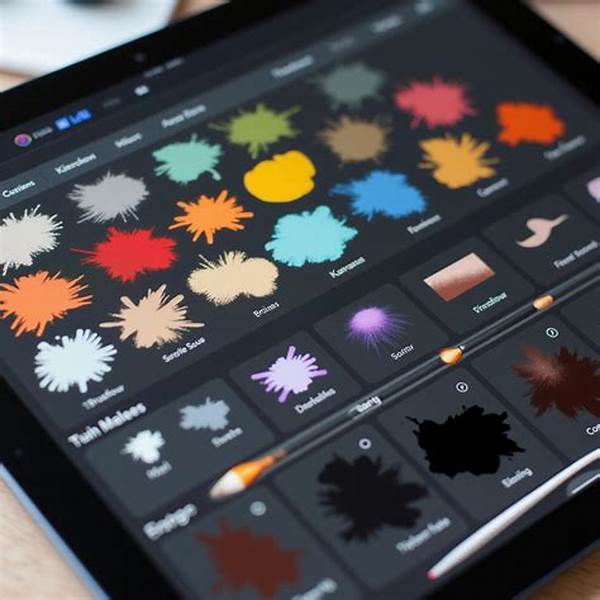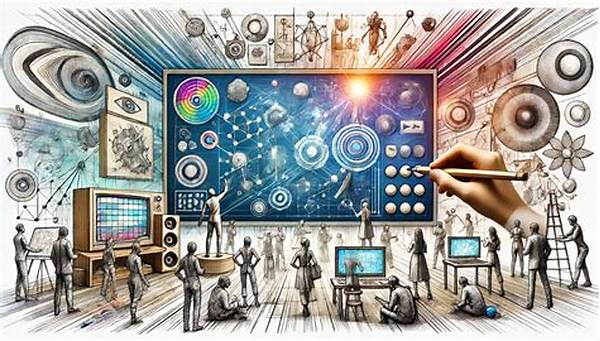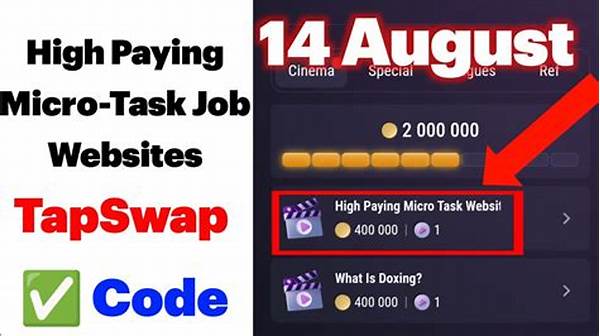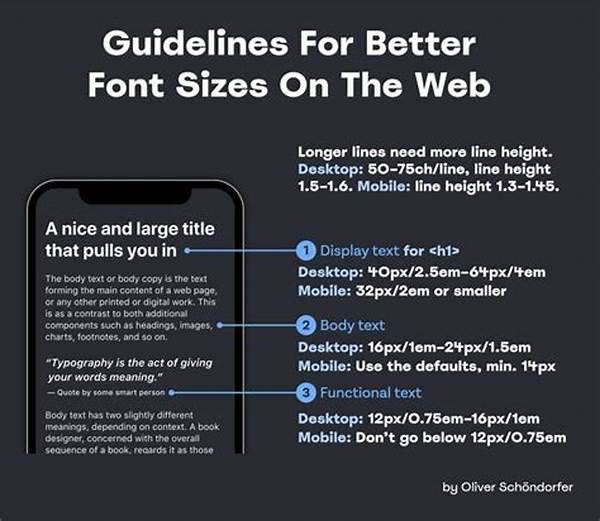In today’s digital age, artists no longer limit themselves to traditional paints or canvases. Digital painting has emerged as a popular medium for both professionals and hobbyists, providing a new realm of artistic exploration. Whether you’re just starting or looking to enhance your digital artwork, understanding which tools to use can make a world of difference. This article delves into digital painting tools for hobbyists, highlighting the benefits and features that can elevate your creative journey.
Read Now : Selecting Diverse Art Portfolio Pieces
Essential Software for Digital Painting Enthusiasts
When diving into the realm of digital painting, selecting the right software is crucial. Aspiring artists have a plethora of choices, each offering unique features tailored for different needs. Applications like Adobe Photoshop and Corel Painter have become staples due to their comprehensive toolsets and flexibility. However, for those seeking cost-effective alternatives, Krita and GIMP provide powerful functionalities without the price tag. These software tools give hobbyists the means to experiment, sketch, and refine their techniques, making digital painting both accessible and enjoyable.
Additionally, the intuitive nature of these programs ensures that even beginners can quickly adapt. Learning curves vary, but with online tutorials and communities, mastering digital painting tools for hobbyists is within reach. Whether layering intricate details or applying realistic textures, the possibilities are boundless. As technology advances, these tools continue to evolve, offering artists enhanced features and performance. Thus, selecting the right software is not just about immediate functionality but also long-term growth in one’s artistic journey.
Crucial Hardware for Digital Artists
1. Graphic Tablets: Essential for precision and control, graphic tablets like Wacom offer pressure-sensitive pens that mimic traditional brushes, making them a top choice in digital painting tools for hobbyists.
2. Stylus Pens: Investing in a quality stylus enhances the digital painting experience, providing fine control and a natural feel.
3. High-Resolution Monitors: Ensure detailed clarity and color accuracy, essential for rendering vibrant digital artworks.
4. Laptops and Computers: A powerful device is key. It should support demanding software and multitask efficiently to optimize digital painting performance.
5. Calibration Tools: Maintain color accuracy and consistency across all digital artworks with monitors calibrated to professional standards.
Advantages of Digital Painting for Hobbyists
Digital painting offers numerous advantages for hobbyists looking to explore their creativity. Unlike traditional mediums, digital creation allows endless revisions without the fear of ruining your canvas. Mistakes are easily undone with a simple click, and experimentation with colors, styles, and compositions is limitless. Moreover, digital artworks don’t require physical storage, making them ideal for those with limited space.
For those venturing into digital painting tools for hobbyists, time and cost savings are another significant benefit. There’s no need to invest in frequent replenishment of physical supplies, such as paints and canvases. Collaborations and sharing art have also seen a boost, as digital platforms connect artists instantly worldwide. The convenience and versatility of digitized creation have opened new doors for hobbyists to pursue and refine their passion at their own pace.
Exploring Free and Paid Tools for Hobbyists
1. Krita: A free, open-source software offering robust features tailored for illustrators and digital painters.
2. GIMP: Popular for its extensive capabilities, GIMP serves as a free alternative to commercial painting programs.
3. Adobe Fresco: Designed with various brushes and a natural drawing interface, making it a favorite among newcomers.
4. ArtRage: Known for its realistic paint effects, ArtRage is available at a friendly price point, perfect for hobbyists.
Read Now : Art Transaction Transparency Blockchain
5. Procreate: Specifically for iPad users, it delivers impressive drawing tools and features at a competitive price.
6. Autodesk SketchBook: Free for individual use, it provides a range of drawing tools ideal for all levels of artists.
7. Corel Painter: Offers advanced brush and texture options, making it a premium choice for dedicated hobbyists.
8. MediBang Paint: With built-in collaboration features and cloud storage, this free software is great for group art projects.
9. Affinity Designer: Its one-time purchase price and vector graphics capability offer significant value without subscriptions.
10. SketchUp: While primarily a 3D modeling tool, its integration features make it a powerful addition to more advanced digital projects.
Transitioning from Traditional to Digital Art
For many artists, transitioning from traditional to digital art can be a daunting prospect. However, with the right support, this journey can be both exciting and rewarding. One primary concern is the difference in tactile feedback—using a stylus on a tablet differs substantially from a brush on a canvas. Thankfully, digital painting tools for hobbyists often incorporate features that bridge this gap, such as pressure sensitivity and customizable brushes mimicking real-world textures.
Moreover, many hobbyists find that their skills naturally translate across mediums. Techniques learned in traditional painting, like color theory and composition, are equally essential in digital art. Those who embrace both practices may find unique advantages in blending techniques, ultimately enhancing their artistic repertoire. As hobbyists grow more comfortable with digital tools, they often discover new levels of creativity previously unexplored with traditional means.
Cultivating Skills with Digital Painting Tools
Even as technology provides accessible digital painting tools for hobbyists, skill cultivation remains an important facet of artistry. Online platforms offer countless tutorials and classes to expand your knowledge base and refine your technique. Interaction with digital art communities can significantly boost your motivation and inspiration, allowing for exchanges of feedback, techniques, and friendly competitions. Furthermore, consistent practice is essential; just like traditional art, digital art benefits from regular engagement and experimentation. By leveraging available resources, hobbyists can steadily develop their digital painting skills, transforming initial curiosity into enduring passion.
Concluding Thoughts on Digital Painting Tools for Hobbyists
Digital painting tools for hobbyists have revolutionized the artistic landscape by offering opportunities that were previously unreachable through traditional techniques alone. The convenience of accessing powerful software and hardware means that hobbyists can create, experiment, and share their art globally without substantial financial investments. As the world of digital art continues to expand, hobbyists are encouraged to explore and embrace these technologies, propelling their artistic journeys in new, exciting directions.
In summary, whether you are an aspiring artist or seasoned hobbyist, the realm of digital painting presents an exciting playground for creativity. By selecting the right tools and investing time in learning, hobbyists can unlock new potentials and confidently express their artistic visions in the digital age.



